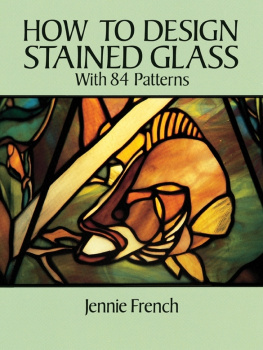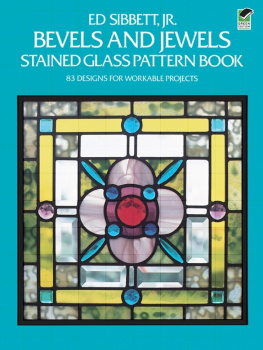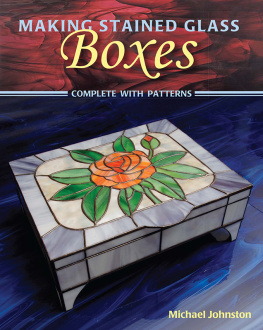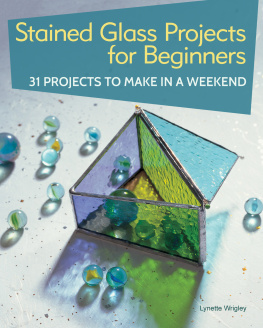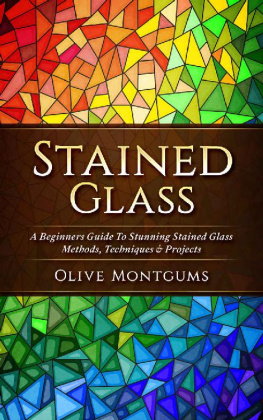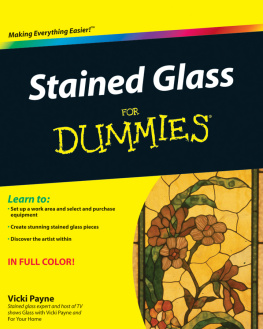THE STAINED GLASS HANDBOOK
BY SAM HALSTEAD
Copyright 1981, 2013 by R.K. (Sam) Halstead.
All rights reserved, including the right of reproduction in whole, or in part, in any form.
TABLE OF CONTENTS
THANKS.
Thanks to Herald Publications of Auckland, New Zealand, who printed and published the first and second print editions of this book. Unfortunately the printing plates were mislaid after two editions and 20,000 copies. Herald Publications were kind enough to allow me to keep the copyright and the book has since been fully revised and digitized. Most of the illustrations are taken from the pages of the original book. All stained glass pictured in this book, except for Juliets jewelry box, is the work of the author.
ABOUT THE AUTHOR
Sam Halstead ran his own stained glass studio for many years and employed other glass artists to help with the workload. The studio produced everything from simple foiled lampshades to large windows for churches and commercial buildings. Sam attended a design workshop with the German master Ludwig Schaffrath and, like many glass artists, was very influenced by glass artists of the postwar German era. The studio completed nearly 2000 commissions and Sam has held workshops around the New Zealand and the USA. He now lives and works in Southern California.
INTRODUCTION
The first step to becoming a stained glass craftsperson is obviously to learn the rudimentary construction techniques. If you desire to be an artist, and have little or no training, this should be accompanied by a study of the elements of design and the principles of design. If you think you cant draw, take some classes and do some practice. The more you develop your own creativity, the more joy you will receive from your finished products. If you are an artist or designer from another medium, you may bring a fresh perspective to the craft.
Learning the techniques and discovering the potential of stained glass are exciting experiences and I am glad to be able to share them with you.
Dig deep, express yourself, put some good music on, and have fun with this book.
Sam

1. G LASS SAFETY
S afety is the most important topic in this book. Glass is sharp, lead can be poisonous, and soldering irons are hot. Be careful out there!
1. Carry glass vertically with both hands.
2. Do not wear sandals or open-toed shoes. If glass falls, do not try to catch it. Its a natural reaction but develop a new one stepping back out of the way.
3. Change your shoes before moving into living areas.
4. Wear safety glasses when cutting glass.
5. Keep the bench-top clear of glass scraps and splinters.
6. Do not eat or smoke while handling lead.
7. Be especially careful with lead if you are pregnant as high contamination levels can cause miscarriage.
8. Have your blood tested for lead levels every year if you are doing a lot of lead work.
9. Scrub your hands with soap and a nailbrush after lead work.
10. Vacuum the floor - do not sweep dust around.
11. Keep young children aware or away.
12. Wear a facemask on those dusty jobs like cementing and blackening.
13. Keep some Band-Aids nearby.
There is a little danger in working with glass and lead so keep your work area clean and take care.


